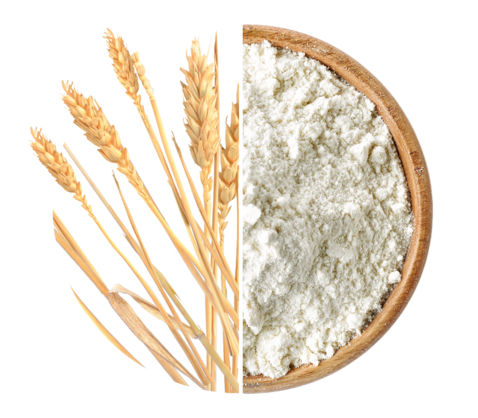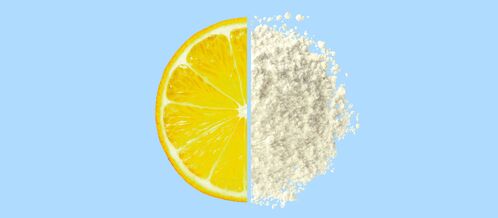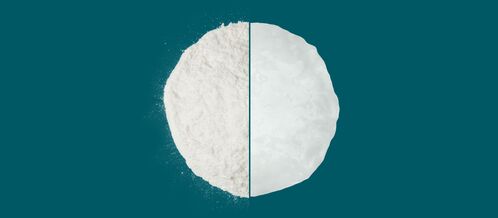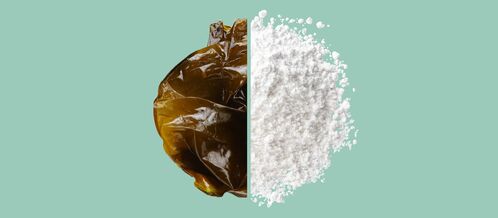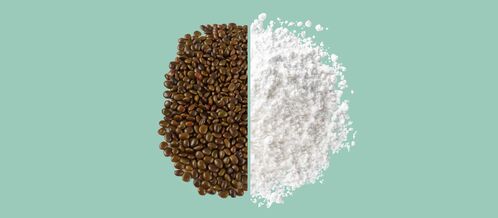
VITACEL® WF Wheat Fiber
Cereal fiber naturally derived from wheat stems.
VITACEL® WF Wheat Fiber was developed by JRS in 1991 and has been continuously improved since then. It made JRS a pioneer in the development of insoluble fiber, which today stands for expertise and extensive knowledge in the field of fiber technology.
VITACEL® Wheat Fiber is an insoluble fiber designed to improve the nutritional value of foods, and the ideal food ingredient to follow the reformulation strategy by fiber enrichment. The product is made from wheat stems, which are a by-product of wheat grain and flour production, following the concept of integral use. Through careful processing steps, the sustainable raw material is refined into standardized dietary fiber types with a fiber content of 97% consisting of cellulose and hemicellulose.
Key Benefits of VITACEL® Wheat Fiber
Improved Nutritional Profiles
As the nutrient with the lowest energy density, fiber allows for reformulation of a wide variety of foods and, given a certain level for their promotion as a “source of fiber.”
Texture and Taste
Very good sensory properties enable nutritional optimization without compromise.
Consumer Acceptance
Natural raw materials and clear labeling ensure high consumer acceptance.
Composition
97% dietary fiber. Without FODMAPs.
Handling
A high degree of standardization and inert behavior in processing guarantee consistent results in good quality.
Gluten free
Legally Approved
Kosher
Non GMO
Halal
High Quality
Applications of
VITACEL® Wheat Fiber
The organoleptically neutral VITACEL® WF contributes to the nutritional optimization of foods while preserving their characteristic taste and texture and thus also their acceptance among consumers.
VITACEL® Wheat Fiber is excellent for fiber enrichment and can easily transform foods into "fiber sources" (3g/100g) or even "high-fiber" foods (6g/100g).
With more than 140 years of experience in milling technology, JRS Food Ingredients provides different grades in a broad range of fiber lengths.
Long-standing expertise and presence in international markets (EU, USA, etc.) with VITACEL® Wheat Fiber meanwhile guarantees broad acceptance and understanding of the nutritional properties of fiber among manufacturers and customers.

Request Brochures / Formulations
Please fill in your contact data and we will send you the formulation / brochure.
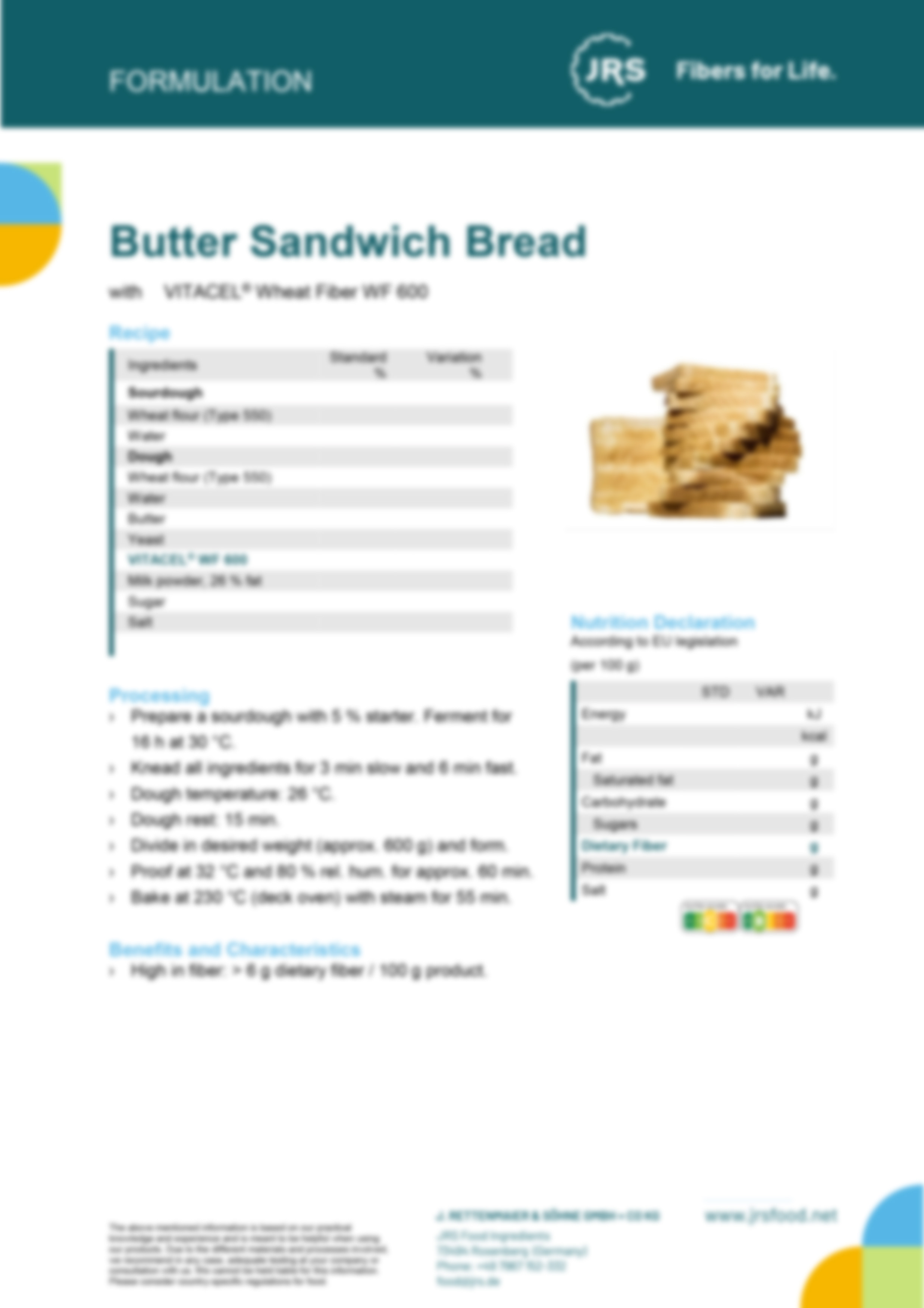 Buttertoast
ButtertoastButter Sandwich Bread
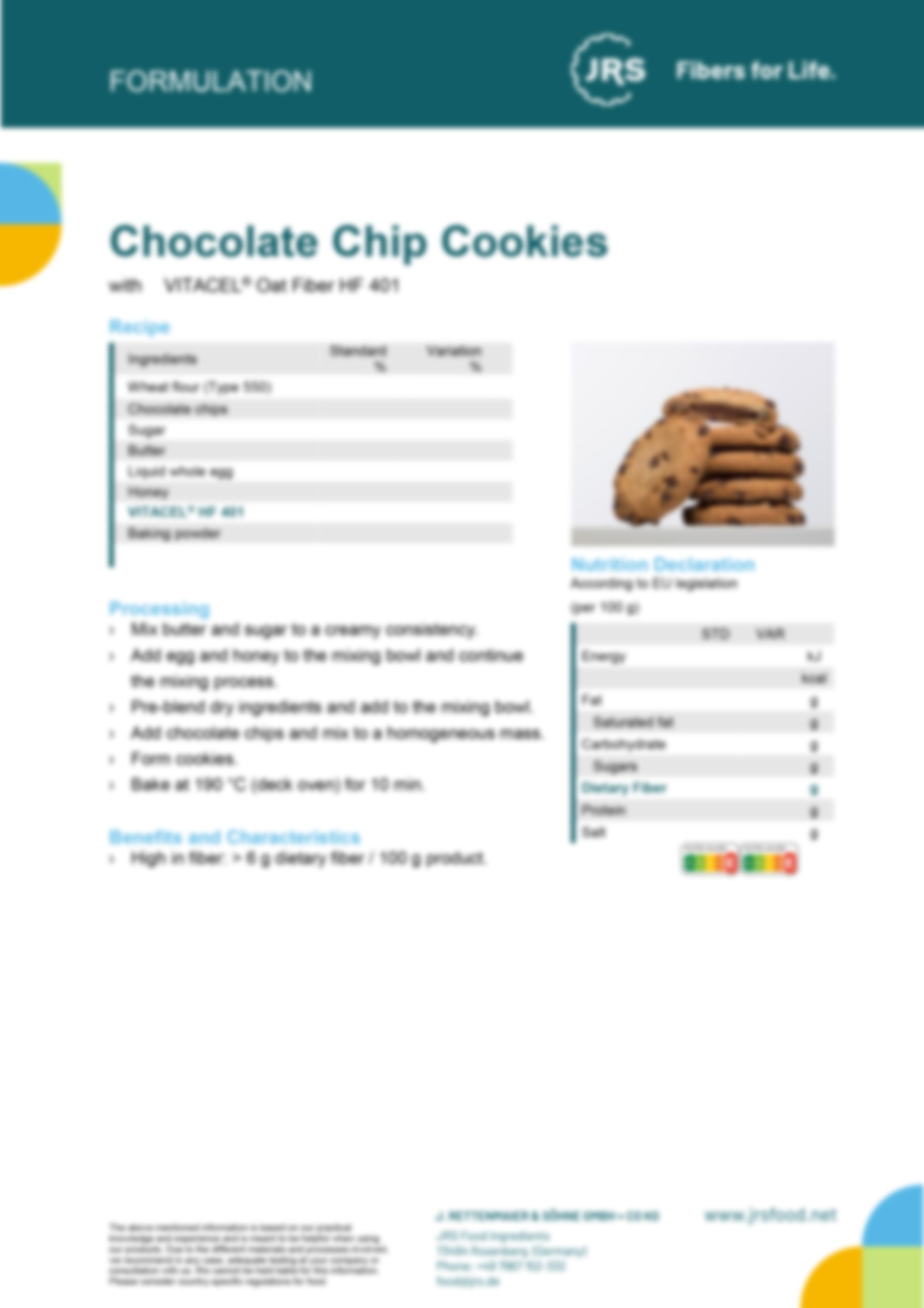 Chocolate Chip Cookies
Chocolate Chip CookiesChocolate Chip Cookies
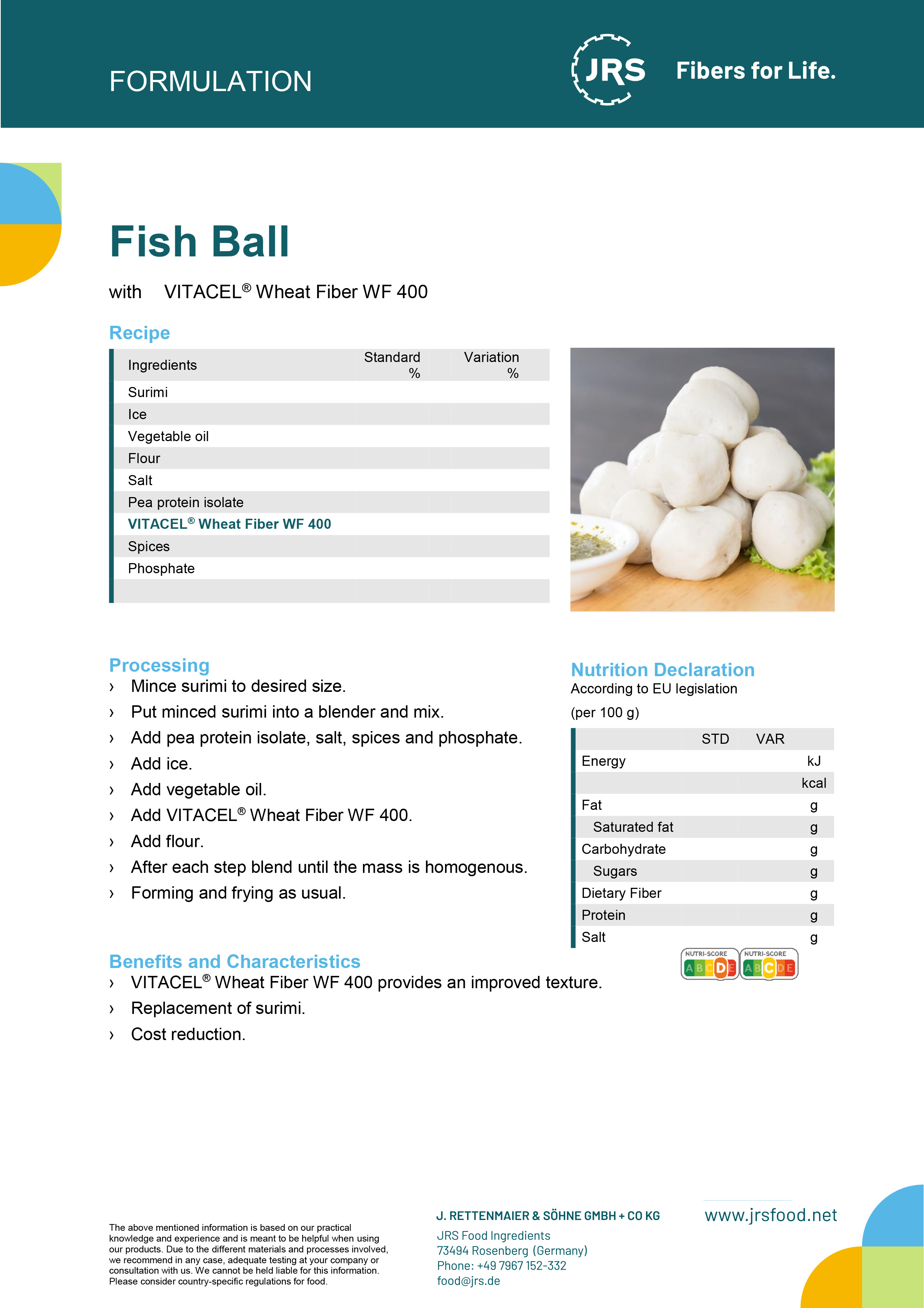 Fischbällchen
FischbällchenFish Ball
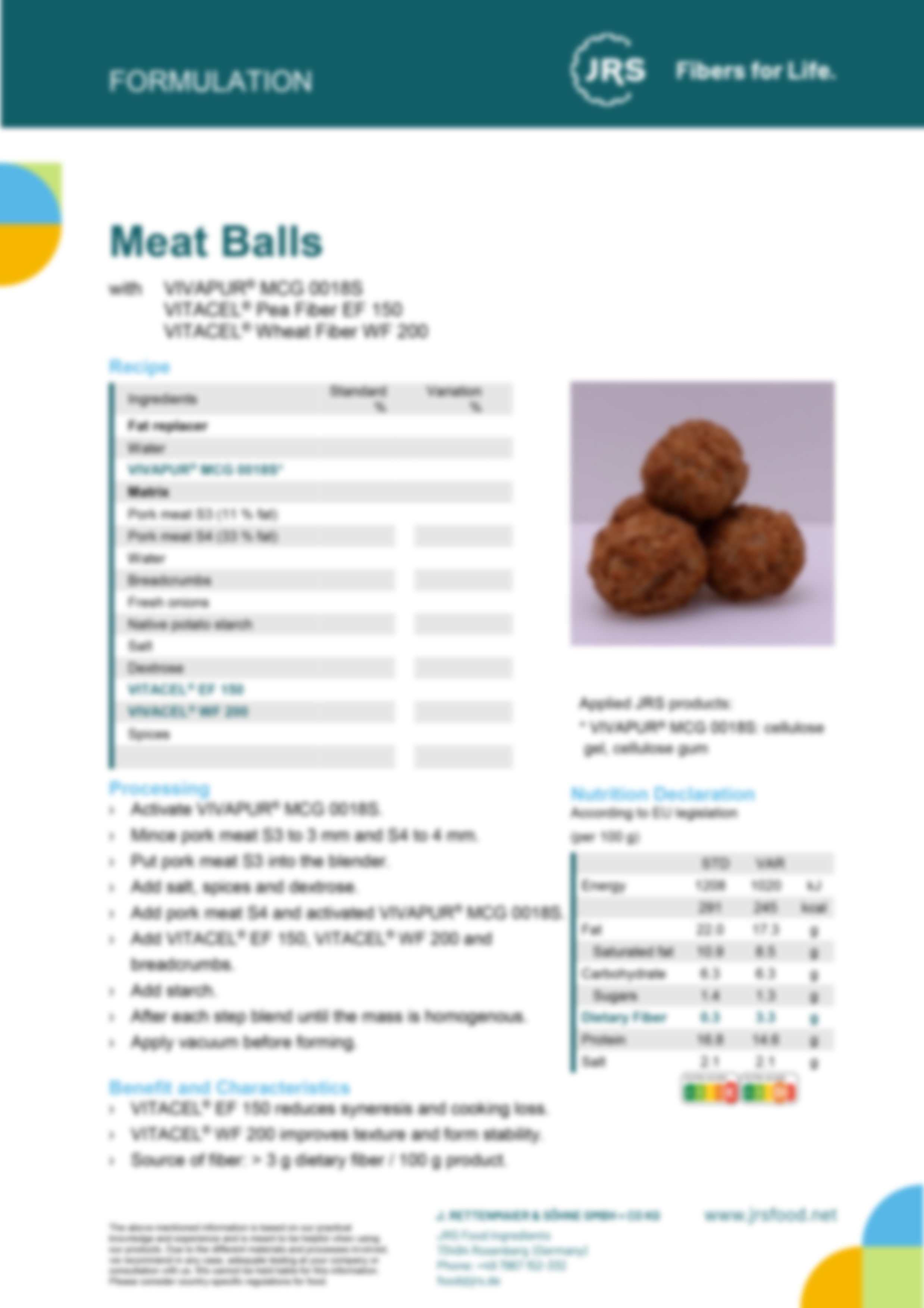 Fleischbällchen
FleischbällchenMeat Ball
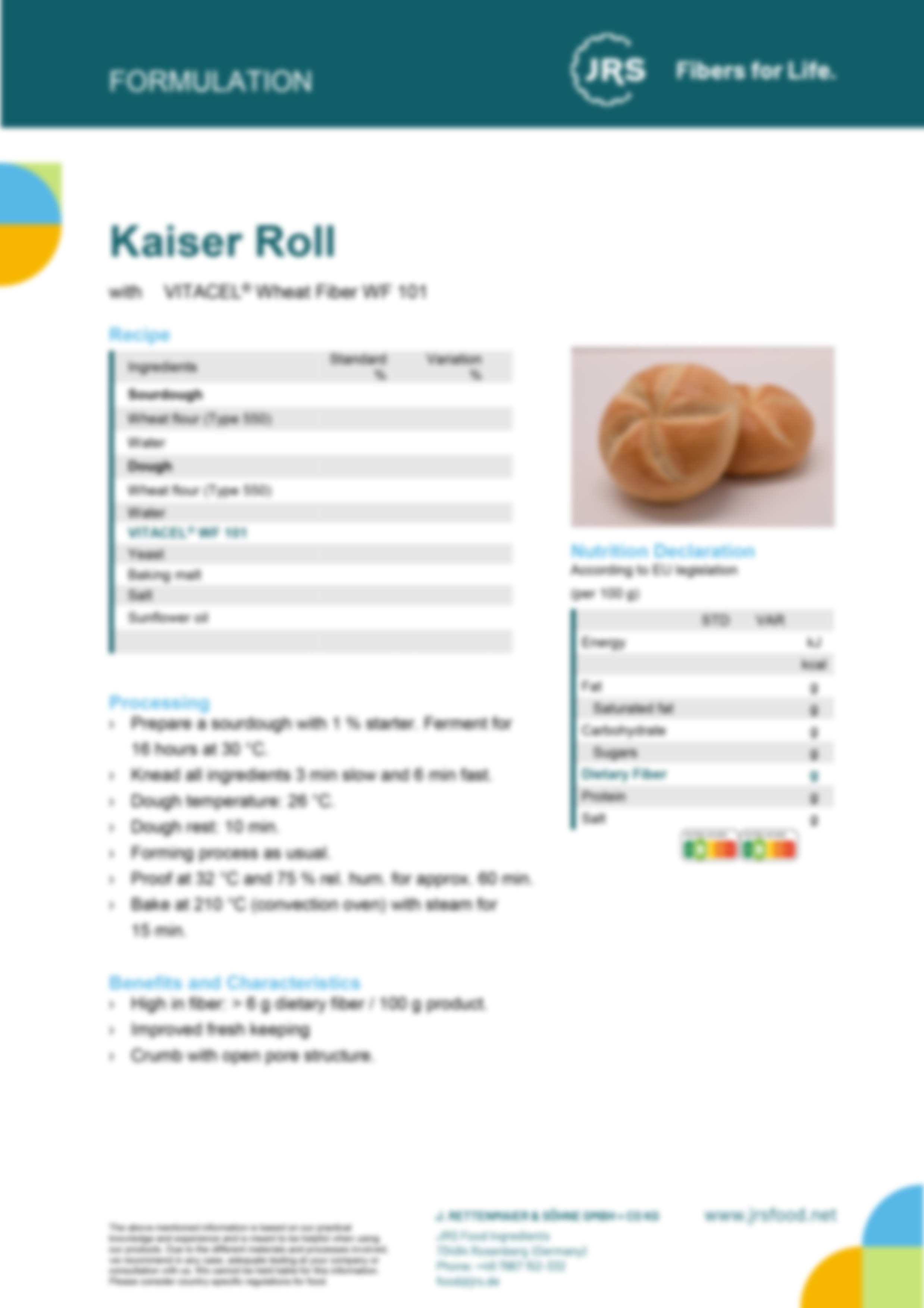 Kaiserbrötchen
KaiserbrötchenKaiser Roll
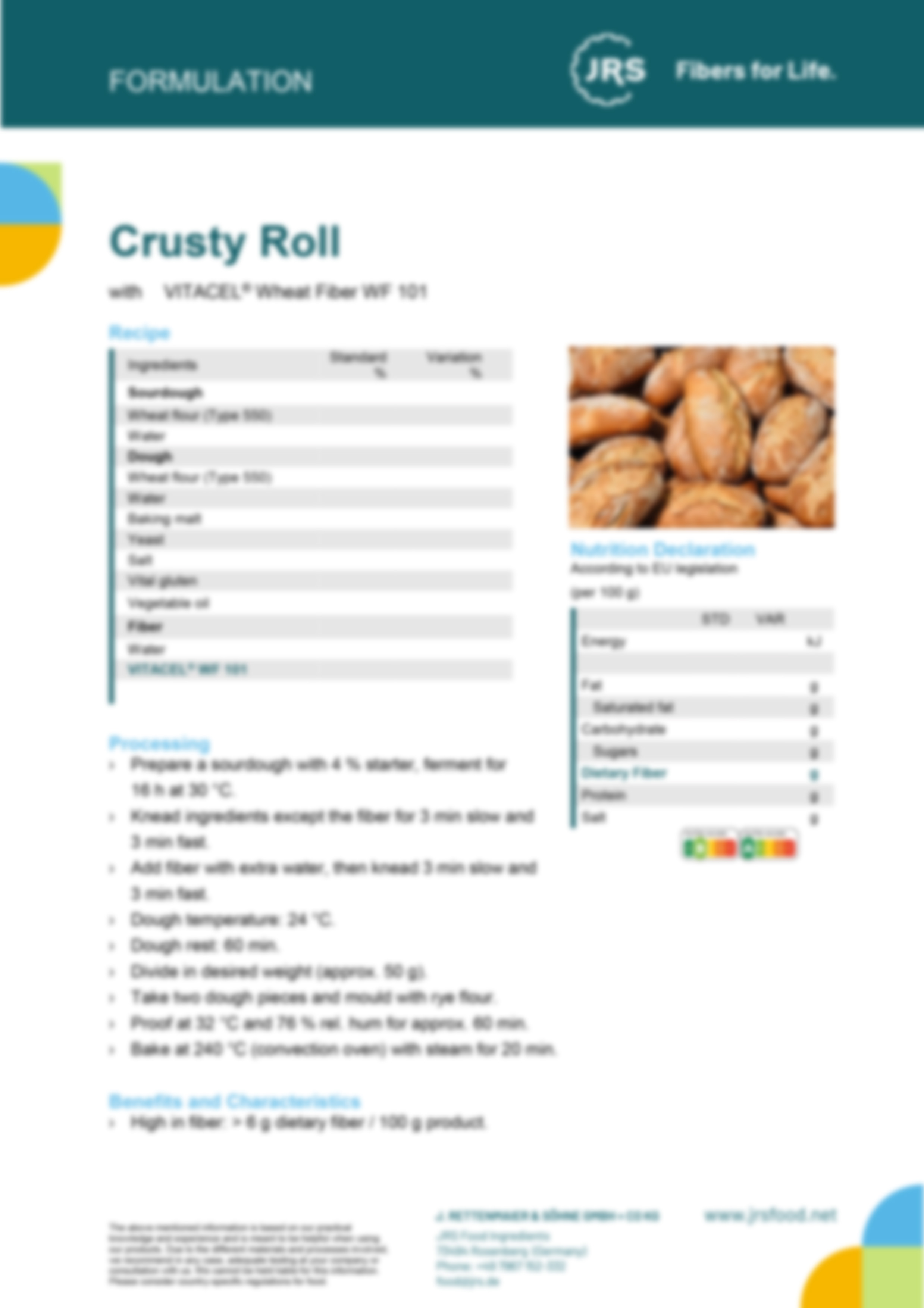 Knuspriges Brötchen
Knuspriges BrötchenCrusty Roll








